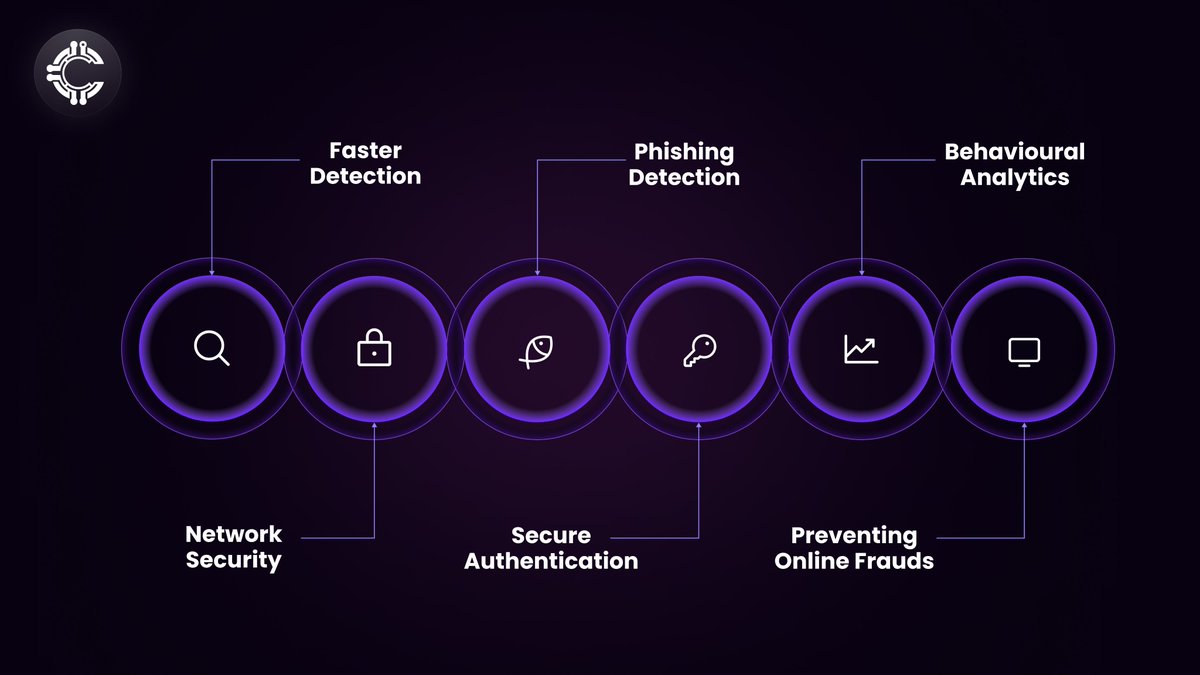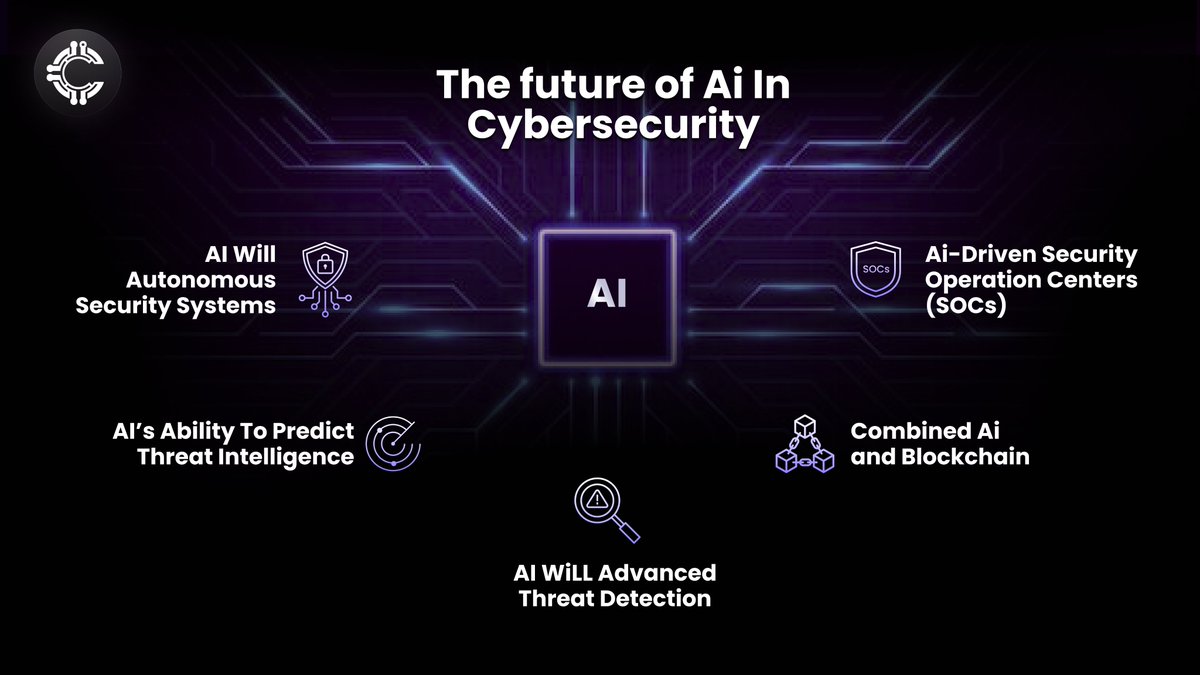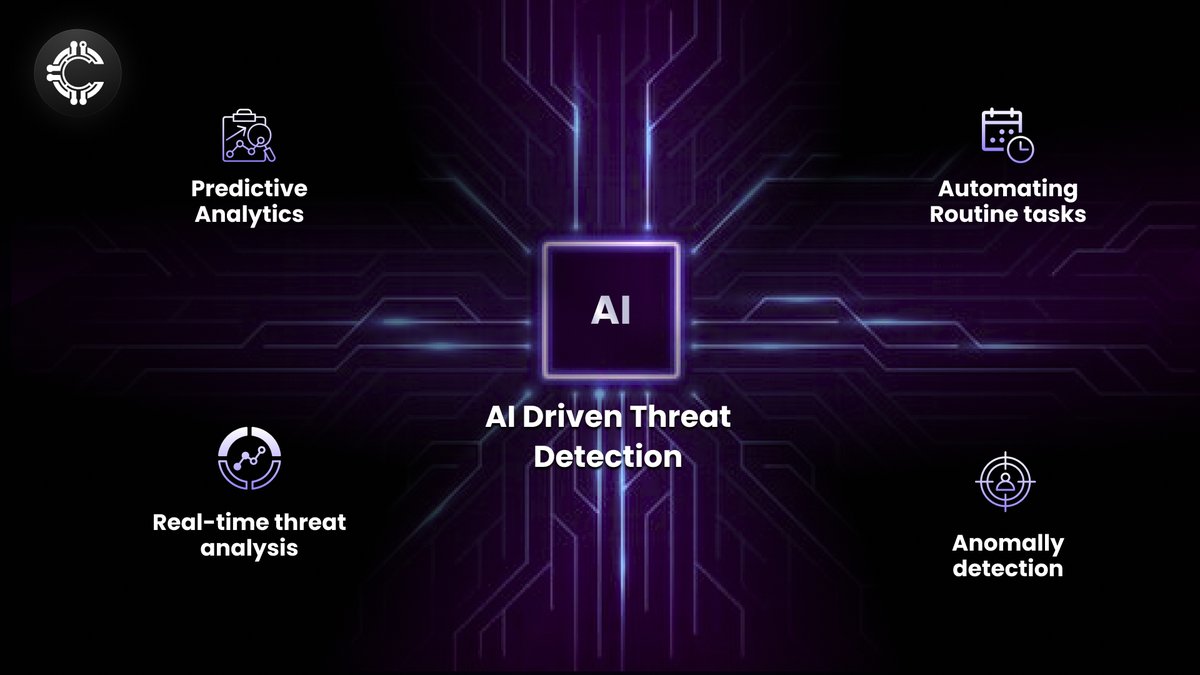Cyber security by Decentralized AI
Oct 9, 2024
13 min Read
Introduction
In today's interconnected world, cybersecurity has emerged as a critical issue. Beyond the traditional threats of theft and data privacy breaches, the scope of cybersecurity now encompasses far more serious offences. Intellectual Property Infringement and identity theft, often driven by inadequate data privacy measures, are just a few examples.
The financial impact of cybercrime is staggering, with over $100 billion lost to online hacks and scams annually. This not only leads to direct economic losses but also erodes trust in online transactions and hinders risk assessment. As more activities shift online, the potential for cyberattacks is likely to grow exponentially.
Artificial Intelligence (AI) has become a valuable tool in cybersecurity. AI-powered systems can process vast amounts of data quickly and efficiently, enabling them to detect and mitigate threats more effectively than traditional security measures. By analyzing patterns and anomalies in network traffic, AI can identify potential cyberattacks before they occur.
As technology continues to advance, so too do the cyber threats it faces. These threats are becoming increasingly complex and sophisticated, making it harder to defend against them. Unfortunately, centralized AI systems, despite their powerful capabilities, are not immune to these threats. Their centralized nature can make them particularly vulnerable to attacks. Additionally using centralized AI for cybersecurity puts private user data at stake, which is the most valuable asset for AI models.
Decentralized AI gives a viable solution to the problem by distributing data processing and decision-making across a network of nodes.
Role of AI in cybersecurity

AI has become a real game-changer in the world of cybersecurity. By automating tasks, analyzing vast amounts of data, and detecting anomalies, AI-powered tools are providing unprecedented levels of protection against cyber threats. Newer AI-powered cybersecurity tools and systems can support providing even better data protection against threats by quickly recognizing behaviour patterns and reducing response timings.
Before AI came along, security professionals relied heavily on signature-based detection tools. These tools worked by comparing incoming network traffic to a database of known threats. It was like trying to catch a thief by matching their fingerprints to a mugshot gallery. While this approach was somewhat effective for known threats, it had its limitations. When it came to new or unknown threats, these tools were often powerless. It was like trying to catch a thief who didn't have a mugshot yet.
Here's how AI is making a difference:
1. AI can serve as the engine for security automation, which frees up the time and resources of employees by automating repetitive tasks. In comparison, traditional security measures can take hours if not days to analyse the same amount of data, an AI does in minutes.
If trained correctly for repetitive tasks of analysing data and finding pre-fed issues, it can be a great add-on in cybersecurity firms.
2. Deep Neutral Networks: Deep neutral networks are a complex version of machine learning which trains a machine to imitate the human brain based on AI training. They act like the human brain, with layers that process information and learn from experience. Deep neutral algorithms are designed to follow a preset list of rules by predicting solutions and drawing conclusions based on previous experiences.
They're better than traditional machine learning at solving complex tasks like summarizing documents or recognizing faces because they can learn and improve over time.
3. Constant learning: As AI models can be trained continuously with relevant training datasets, it gives a hedge against new and more complex cybersecurity attacks and threats. Training data can be acquired with realistic and engaging security training scenarios, simulations, and exercises.
Limitations of Centralized AI in Security
While AI has made significant strides in cybersecurity, it's important to remember that it's still a relatively new technology. It's not a magic bullet that can solve all of our security problems.
1. The False Positive Problem
One of the biggest challenges with AI-powered security systems is the high rate of false positives. AI-powered security systems rely on machine learning algorithms that learn from historical data.
This can lead to a high number of false positives when the system encounters new, unknown threats that do not fit into existing patterns which can send entire security teams on to “Wild Goose chase”.
2. The AI vs. AI Arms Race
Nowadays hackers use AI for malicious purposes, including generating convincing phishing emails and even building out malware. So it’s clearly an AI vs AI battle out there. Just as we're using AI to defend against threats, hackers are also using AI to launch new attacks.
It's like a never-ending game of cat and mouse.
3. Data Privacy
Private data is gold for training AI models, and many centralized firms will be using the private data of users relying on AI for cybersecurity, putting data privacy at risk.
Decentralization is more crucial than ever
As generative AI and AI-driven technologies continue to gain momentum, data privacy and decentralization have become paramount concerns. The increasing adoption of AI by major companies places vast amounts of user data at risk. This highlights the urgent need for decentralized solutions to protect user privacy and mitigate the risks associated with centralized control.
Let’s look at some examples to understand it better -
1. Apple's recent announcement of Apple Intelligence, a generative AI system integrated into its mobile operating systems, has generated excitement and concern.
While the technology promises to drive consumer behaviour and market competition, questions remain about Apple's control over user data and privacy measures.
One significant concern is Apple's reliance on third-party APIs. This could lead to vendor lock-in and potential data privacy risks. Although Apple has introduced Private Cloud Compute, its effectiveness in ensuring data privacy remains to be seen.
The centralized nature of Apple Intelligence also raises concerns about data privacy and security. With Apple controlling the entire system, there is a risk of data breaches and potential misuse of user information.
2. Take an example of a large tech company developing a new AI-powered language model. While this technology may offer numerous benefits, it also raises questions about how the company will handle and protect the massive amounts of user data used to train the model.
A decentralized approach could help address these concerns by distributing data across multiple nodes and reducing the risk of data breaches or misuse.
What is Decentralized AI?
Decentralized AI refers to the usage of AI algorithms and models that are spread across numerous network nodes. It facilitates the use of distributed computing infrastructure in contrast to centralized AI, where all data and processing take place on a single system.
Decentralized AI's enhanced cybersecurity is rooted in its distributed structure. Unlike centralized systems that rely on a single point of control, decentralized AI functions on a network of interconnected nodes.
Each node maintains a copy of the data and contributes to the decision-making process. This distributed nature eliminates the vulnerability of a single point of failure, making it extremely challenging for attackers to compromise the entire system. To succeed, attackers would need to simultaneously compromise multiple nodes, which is significantly more difficult and resource-intensive.
Decentralized AI: Your cybersecurity sidekick, always on guard.
1. No single point of failure due to decentralized Access control - Decentralized AI's distributed nature makes it resistant to attacks as there is no single point.
2. Real-time training with Federated training - Decentralized AI can continuously learn and adapt to new threats, providing real-time protection with adequate training and training data sets.
3. Customization in fine-tuning AI model - Decentralized AI allows for tailored security solutions to meet specific security needs.
4. Collective intelligence - Decentralized AI benefits from the combined knowledge and expertise of multiple nodes.
5. Enhanced Data Privacy - Decentralized AI allows multiple stakeholders to share expertise, resources and intelligence for better security measures.
6. Improved threat detection - Decentralized AI can identify and respond to emerging threats more effectively.

*Don’t worry, we’ll discuss each of these points in depth in this blog*
Federated Learning in Real-time Training
Federated Learning (FL) is a decentralized machine learning paradigm that enables multiple devices to collaboratively train a shared model without exchanging their raw data. With federated learning, organizations can train AI models for cybersecurity applications efficiently without compromising data privacy and security.
How Federated Learning Works
1. Model Distribution: A global model is initially distributed to participating devices (clients).
2. Local Training: Each client trains the model on its local data, updating the model's parameters.
3. Model Aggregation: The updated models from all clients are aggregated at a central server or peer-to-peer network.
4. Global Model Update: The aggregated models are combined to create a new global model, which is then redistributed to the clients.
*Federated learning, when implemented in real-time, opens up a world of possibilities for decentralized AI in cybersecurity. Let's explore some of the exciting use cases it enables.*
- **Intrusion Detection:** Continuously updating intrusion detection models on edge devices to detect new threats.
- **Malware Classification:** Training models on local devices to classify new malware variants.
- **Anomaly Detection:** Detecting anomalous network traffic patterns in real-time.
Power of Collaboration: Collective Intelligence
The success of humans as a species is credited to the collective nature of our society. Working in collaboration has key benefits in building a resilient cybersecurity ecosystem. The collaborative nature of Decentralized AI allows multiple stakeholders to share expertise, resources and intelligence for better security measures.
The network's collective intelligence enables more effective identification and mitigation of security risks.
Decentralized AI can facilitate secure information sharing between organizations, enabling them to stay informed about emerging threats and coordinate their defence strategies. This collaboration can help organizations stay ahead of cybercriminals and reduce the risk of successful attacks.
Decentralized access control - No single point of failure
By distributing control across multiple nodes, decentralized access control systems create a stronger defence against cyberattacks. Imagine it like a fortress with many guards, each watching a different part of the wall. If one guard is compromised, the others can still protect the fortress. This makes it much harder for hackers to break in and steal sensitive data.
How DAC works in decentralized AI:
1. Identity management: DAC systems use cryptographic techniques to verify the identity of users and devices.
2. Access control policies: DAC systems define rules and policies that govern access to data and resources. These policies can be based on factors such as user roles, device type, and location.
3. Distributed decision-making: DAC systems distribute access control decisions across multiple nodes on a network. This makes it more difficult for hackers to compromise the system and gain unauthorized access.
4. Consensus mechanisms: DAC systems use consensus mechanisms to ensure that all nodes agree on access control decisions. This helps to prevent malicious actors from manipulating the system.
Data privacy provided by Decentralized AI
The owner controls the data in case of decentralized AI and decides who can access their data and how it can be used. With the use of blockchain tamper-proof data storage Decentralized AI guarantees data privacy for users utilizing AI models for cybersecurity.
Data integrity is guaranteed by the decentralized architecture of the blockchain, which means that once information is uploaded to the chain, it cannot be removed or changed without network approval. Only authorized individuals possessing the necessary cryptographic keys can access encrypted data stored on the blockchain.
Decentralized AI minimizes the amount of data that needs to be shared and exposed. Only the necessary data is shared with other nodes on the network, reducing the risk of unauthorized access. This also helps to protect sensitive information, such as personally identifiable information (PII), from being exposed to third parties.
Improved Threat Detection with Decentralized AI
With millions of bugs and hacks coming up every year, traditional cybersecurity systems often struggle to keep pace with the rapidly evolving threat landscape. Decentralized AI, with its ability to leverage collective intelligence, can continuously learn from diverse data sources and adapt to new threats in real-time. By integrating decentralized AI into security operations centres (SOCs), organizations can benefit from enhanced threat detection capabilities, enabling quicker and more effective responses to cyber incidents.
- **Response time of threats** can be reduced significantly with Decentralized AI by automating tasks like quarantining infected systems or blocking malicious traffic. This reduces the time it takes for SOC teams to respond to threats.
- **Behavior Analytics:** With better analytics of user behaviour and network traffic, decentralized AI can detect deviations from normal patterns that may signal malicious activity.
- **Real-time Threat Intelligence:** Decentralized AI can continuously gather and analyze threat intelligence from various sources, providing SOCs with up-to-date information on emerging threats and vulnerabilities.

*Let's understand by 2 examples how decentralized AI can help combat a variety of complex cybersecurity threats.*
Oracle attack protection
Oracles, as bridges between blockchains and the external world, play a vital role in smart contract functionality. However, their reliance on external data sources makes them susceptible to various attacks that can compromise the security and reliability of the entire system.
Common Oracle Attacks include Data Manipulation, Sybil Attacks (multiple fake identities to manipulate oracle responses) and Flash Loan Attacks ( exploiting the flash loan mechanism to manipulate oracle prices and profit from arbitrage opportunities)
Decentralized AI contributes to Oracle security by using multiple data sources of external data and consensus mechanisms to verify data integrity before delivering it to smart contracts. It can detect and mitigate Sybil attacks and flash loan attacks with training on the viable data set, ensuring transparency and accountability. The distributed nature of decentralized AI makes it more resilient to attacks, ensuring the overall security of the system.
Deepfakes and Synthetic Media
We all must have seen deepfakes of famous people doing weird stuff, but Deepfakes and synthetic media are becoming increasingly becoming a problem as it is very difficult to distinguish between real and fake content. With as many as 75% of people encountering deep fakes regularly, the numbers are only going to increase with more innovation in AI.
But the problem these Deep fakes are used for disinformation, fraud, and other malicious purposes sometimes even for identity theft.
Decentralized AI can help combat deep fakes and synthetic media by:
- **Detection and Identification:** AI-powered systems can be trained to detect and identify deepfakes and synthetic media, even those that are highly sophisticated.
- **Provenance Tracking:** Decentralized AI can track the provenance of digital content, making it easier to verify its authenticity and origin.
- **Trustworthy Content Distribution:** Decentralized AI can help to establish networks of trusted content providers, making it easier to distinguish between legitimate and fake content.
Implementation : A Challenge
While decentralized AI offers significant potential for cybersecurity, from better threat mitigation to collective intelligence, it is not without its challenges.
Scalability
Scalability is a crucial issue for decentralized networks, as their speed and efficiency can be impacted by increased transaction loads. As the number of transactions increases, maintaining the speed and efficiency and speed of the network becomes difficult.
To address this, researchers are exploring solutions like sharding and off-chain transactions to improve efficiency without sacrificing security.
Interoperable solutions
Cybersecurity has been a longstanding concern, with companies investing heavily in traditional security infrastructure for decades. Shifting to decentralized AI might be challenging due to these substantial investments.
To facilitate a smooth transition and fully leverage the benefits of decentralized AI, it's crucial to develop interoperable solutions that can seamlessly integrate with existing security tools.
Conclusion
In today's interconnected world, cybersecurity has become an essential concern. As the threats to our online security become increasingly sophisticated, it is imperative to explore innovative solutions that can protect our data and systems. Traditional cybersecurity approaches often struggle to keep pace with the rapidly evolving threat landscape. This highlights the need for new and innovative solutions, such as decentralized AI.
It offers a promising approach to addressing the challenges of traditional cybersecurity. By leveraging the power of distributed computing and blockchain technology, decentralized AI can enhance data privacy, improve security, and foster collaboration among stakeholders. While there are challenges to be overcome, such as scalability and interoperability, the potential benefits of decentralized AI in cybersecurity are significant. As this technology continues to mature, we can expect to see even more innovative applications that will help us stay ahead of cyber threats and build a more secure digital future.
About Cluster Protocol
Cluster Protocol is a decentralized infrastructure for AI that enables anyone to build, train, deploy and monetize AI models within few clicks. Our mission is to democratize AI by making it accessible, affordable, and user-friendly for developers, businesses, and individuals alike. We are dedicated to enhancing AI model training and execution across distributed networks. It employs advanced techniques such as fully homomorphic encryption and federated learning to safeguard data privacy and promote secure data localization.
Cluster Protocol also supports decentralized datasets and collaborative model training environments, which reduce the barriers to AI development and democratize access to computational resources. We believe in the power of templatization to streamline AI development.
Cluster Protocol offers a wide range of pre-built AI templates, allowing users to quickly create and customize AI solutions for their specific needs. Our intuitive infrastructure empowers users to create AI-powered applications without requiring deep technical expertise.
Cluster Protocol provides the necessary infrastructure for creating intelligent agentic workflows that can autonomously perform actions based on predefined rules and real-time data. Additionally, individuals can leverage our platform to automate their daily tasks, saving time and effort.
🌐 Cluster Protocol’s Official Links:
